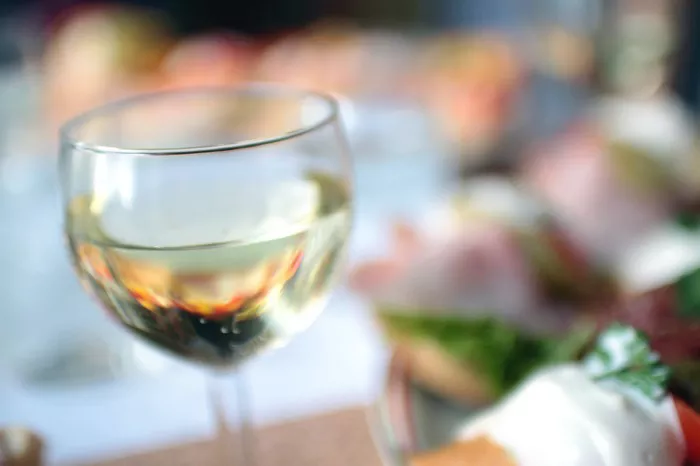White Zinfandel, renowned for its delicate pink hue and refreshing taste, is a beloved wine cherished by enthusiasts around the globe. But have you ever wondered how this delightful libation is crafted? In this article, we delve into the intricate process behind the creation of White Zinfandel, exploring each stage from vineyard to bottle.
Vineyard Selection and Grape Cultivation
At the heart of every exceptional White Zinfandel lies the careful selection of grapes and meticulous cultivation practices. The journey begins in the vineyard, where vintners meticulously choose the finest Zinfandel grapes specifically destined for white wine production. Contrary to popular belief, White Zinfandel does not come from white grapes; rather, it is crafted from red Zinfandel grapes. The key lies in the winemaking process, which extracts the juice while minimizing contact with the grape skins, thus preventing the deep red color from transferring to the wine.
See Also: How is Honey Wine Made?
Harvesting and Crushing
Once the grapes reach optimal ripeness, signaling the peak of flavor development, they are meticulously harvested by hand or machine. Timing is critical, as it directly influences the balance of sugar, acidity, and flavor in the resulting wine. After harvesting, the grapes undergo gentle crushing to release their precious juices. For White Zinfandel, it is crucial to minimize the extraction of color and tannins from the grape skins during this stage, as these elements contribute to the characteristic boldness found in red wines.
Pressing and Juice Extraction
Pressing is a pivotal step in White Zinfandel production, as it determines the wine’s final color, flavor profile, and aroma. To achieve the desired delicate pink hue, winemakers employ gentle pressing techniques that separate the grape skins from the juice quickly. This process minimizes skin contact, resulting in a lighter-colored wine. The extracted juice, now free from the intense pigments found in the grape skins, embodies the essence of Zinfandel with a softer, more nuanced character ideal for white wine production.
Fermentation: Transforming Juice into Wine
Following juice extraction, the transformation from grape juice to wine commences through the process of fermentation. Yeast, whether naturally occurring or added by the winemaker, plays a vital role in this conversion, converting sugars into alcohol and carbon dioxide. For White Zinfandel, fermentation typically occurs in temperature-controlled stainless steel tanks to preserve the wine’s delicate aromas and flavors. This controlled environment ensures a slow and steady fermentation process, allowing the wine to develop its signature crispness and fruit-forward profile.
Cold Stabilization and Clarification
After fermentation, the wine undergoes cold stabilization, a crucial step in enhancing its clarity and stability. During this process, the temperature of the wine is lowered significantly to encourage the precipitation of tartrates, proteins, and other suspended particles. These unwanted substances settle at the bottom of the tank, allowing for their removal through filtration or racking. Cold stabilization not only improves the wine’s visual appeal by reducing haziness but also enhances its shelf life and overall quality.
Blending and Aging
Blending is an art form mastered by skilled winemakers, where different batches of wine are combined to achieve the desired flavor profile and balance. In the case of White Zinfandel, winemakers may blend in small amounts of other white grape varieties to enhance complexity or adjust sweetness levels to suit consumer preferences. Following blending, the wine may undergo a brief period of aging to further harmonize its flavors and textures. While White Zinfandel is typically enjoyed young and fresh, short periods of aging in stainless steel tanks or neutral oak barrels can impart subtle nuances and round out its overall character.
Finishing Touches: Filtration and Bottling
Before bottling, the wine undergoes meticulous filtration to remove any remaining sediment or impurities, ensuring clarity and stability. Filtration methods vary depending on the desired level of clarity and the winemaker’s preferences, ranging from coarse filtration to fine filtration techniques. Once the wine achieves pristine clarity, it is ready for bottling. Automated bottling lines carefully fill each bottle with the finished wine, sealing it with a cork or screw cap to preserve its freshness and integrity. From the bottling line, White Zinfandel embarks on its journey to wine enthusiasts worldwide, ready to be savored and enjoyed.
Conclusion
In conclusion, the journey of White Zinfandel from vineyard to bottle is a testament to the dedication and craftsmanship of winemakers. Through meticulous vineyard practices, gentle pressing, controlled fermentation, and precise blending, they transform humble Zinfandel grapes into a captivating white wine cherished by wine lovers everywhere. Understanding the intricacies of how White Zinfandel is made adds depth to the appreciation of this beloved libation, inviting enthusiasts to savor each sip and celebrate the artistry behind its creation.


